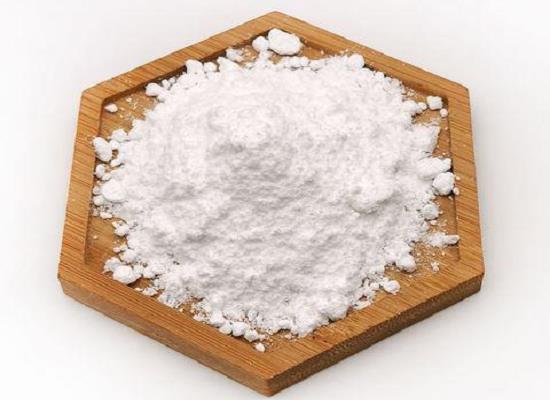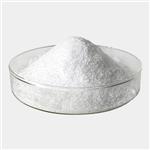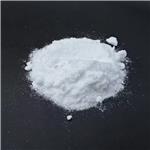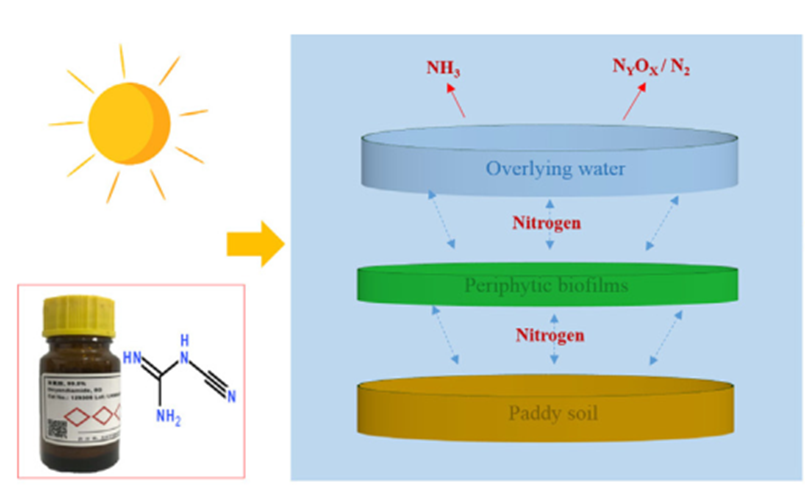Dicyandiamide: Applications in Leather Production and its Electrochemical Detection
General Description
Dicyandiamide(DCD) plays a key role in eco-friendly leather production by forming a biomass-derived retanning agent with Dialdehyde sodium alginate, eliminating the need for formaldehyde. By replacing traditional formaldehyde-containing resins, it helps create a formaldehyde-free product, aligning with sustainability goals.
Besides, since cows grazing the pastures treated with DCD showed traces of the chemical in their milk samples. The detection of dicyandiamide may need more attention.

Figure 1. Dicyandiamide
Applications in Leather Production
Dialdehyde sodium alginate (DSA) is an eco-crosslinker attracting extensive interest while undergoing limited large-scale applications. Xiaoyan Pang's team employed DSA to react with dicyandiamide (DA) for engineering a biomass-derived retanning agent (BDR) towards addressing the long-term toxicity of residual formaldehyde (FA) in leather caused by amino resins. Results confirmed that BDR reserved the structural features of DSA by grafting DA onto DSA molecules. Owing to the suitable molecular weight (main components, 1424–1462 g/mol) and abundant oxygen-containing groups of BDR endowed by DSA, BDR-treated chrome-free leather showed higher hydrothermal stability (82.4 °C), thickening ratio (13.93 %), mechanical strengths (17.2 N/mm2 for tensile strength and 120 N/mm for tear strength), and fullness compared with industrial dicyandiamide-FA-resin (DFR)-treated leather. The FA-free feature of DSA led to BDR-treated leather containing no FA, while FA in DFR-treated leather reached 591.5 mg/kg.
These enhancements are attributed to the Dicyandiamide-infused BDR, which effectively replaces traditional amino resin formulations that typically contain formaldehyde. One of the most significant benefits of incorporating Dicyandiamide into the leather retanning process is the achievement of a formaldehyde-free product. While conventional dicyandiamide-formaldehyde resin (DFR) treated leathers contain up to 591.5 mg/kg of formaldehyde, leather treated with DSA-bonded Dicyandiamide contains none. This stark contrast highlights Dicyandiamide's role in reducing toxic substance use in leather manufacturing, aligning with broader environmental and health safety goals.1
Electrochemical Detection
Dicyandiamide (DCD) finds application in the synthesis of dicyandiamide-formaldehyde polymer/resin and serves as a precursor in melamine synthesis. This nitrogen rich molecule is also extensively used in the preparation of graphitic carbon nitrides (g-C3N4) that exhibit diverse catalytic properties. DCD is one of the most widely used nitrification inhibitor in grazed pasture to decrease the leaching and denitrification from urea and ammonia based fertilizers, and to improve pasture productivity. Cows grazing the pastures treated with DCD showed traces of the chemical in their milk samples. Though the presence of DCD was limited and might not have caused a major health hazard, the US Food and Drug Administration has listed it as an issue of concern. The daily allowed limit of DCD in food samples is 1 mg/kg. This has warranted the development of analytical techniques for routine screening and quantification of Dicyandiamide in dairy products.
R.A. Sharma, A.J. Gescher and W.P. Steward have successfully established a selective and sensitive single run electrochemical approach for the detection of dicyandiamide in various matrix. The presence of chloride containing electrolyte and sufficiently acidic pH are essential for DCD polymer formation on SPCE*. The good recovery values obtained in commercial milk powder, milk and tap water indicate the usefulness of this method. The proposed single run method is highly suitable for on-site and real time detection of dicyandiamide. Based on the experimental results, the anodization process plays a vital role for the oxidation and subsequent adsorption of the oxidized products. However, the increased background current affects the detection of low concentration. Exploring suitable electrochemical pretreatment conditions, including other electrolyte medium and optimizing the preanodization time may enable detection/quantification of even lower concentration.2
References:
[1] WEI DING . Dialdehyde sodium alginate bonded dicyandiamide for formaldehyde-free leather production with enhanced properties[J]. Carbohydrate Polymers, 2022, 295. DOI:10.1016/j.carbpol.2022.119838.[2] THIYAGARAJAN NATARAJAN . Detection of nitrification inhibitor dicyandiamide: A direct electrochemical approach[J]. Food Chemistry: X, 2023, 18. DOI:10.1016/j.fochx.2023.100658.
You may like
Related articles And Qustion
See also
Lastest Price from Dicyandiamide manufacturers

US $0.00-0.00/kg2025-09-30
- CAS:
- 461-58-5
- Min. Order:
- 1000kg
- Purity:
- 0.99
- Supply Ability:
- 1000 tons

US $1.00/KG2025-04-21
- CAS:
- 461-58-5
- Min. Order:
- 1KG
- Purity:
- 99%
- Supply Ability:
- 10 mt



